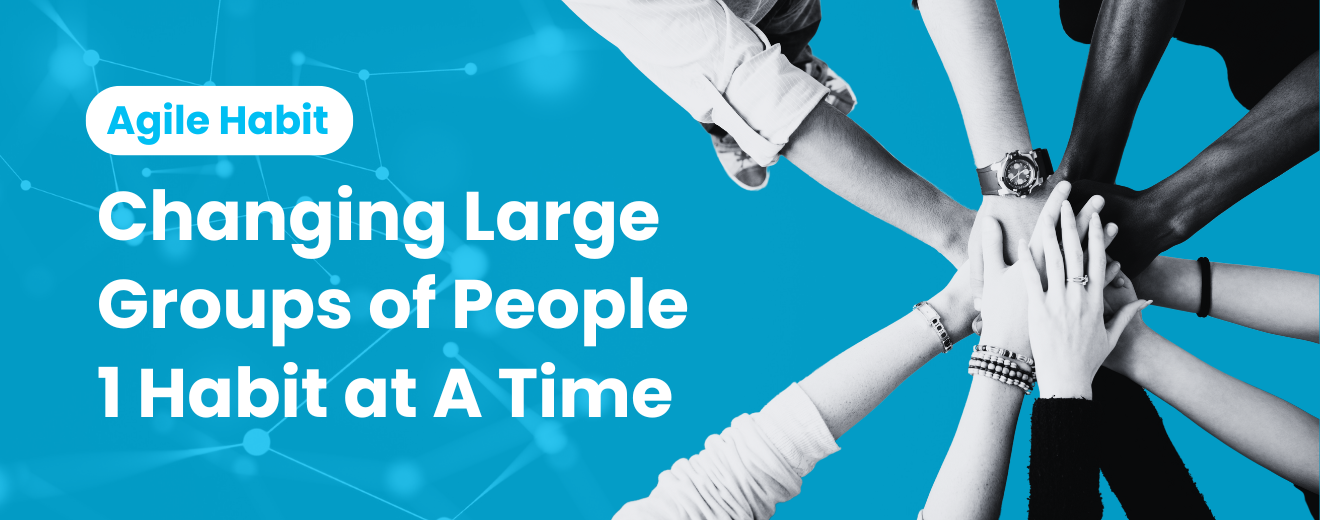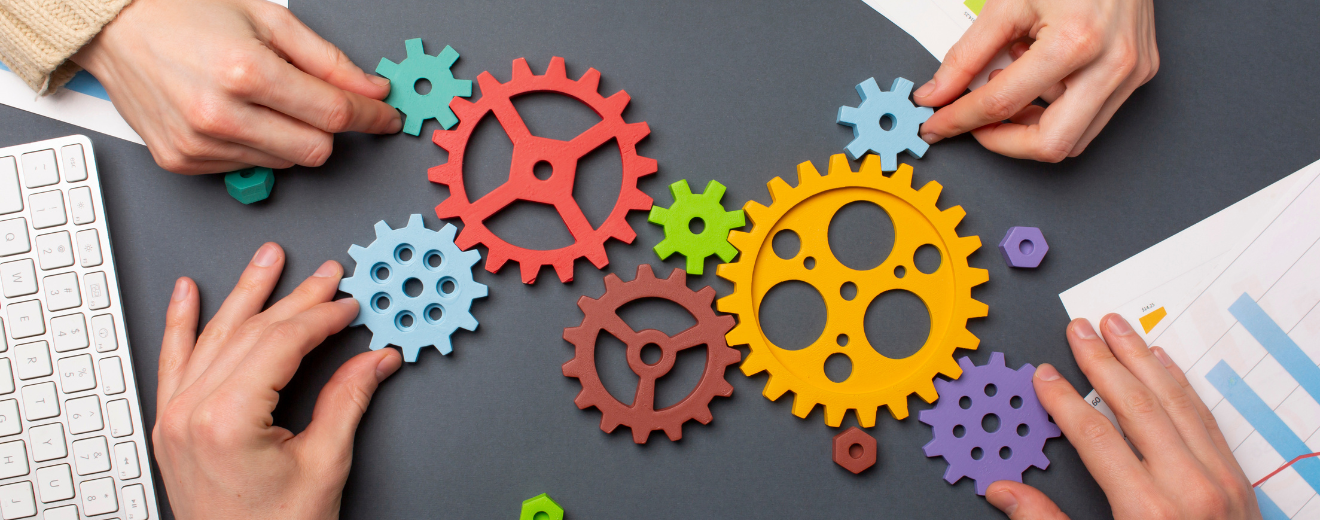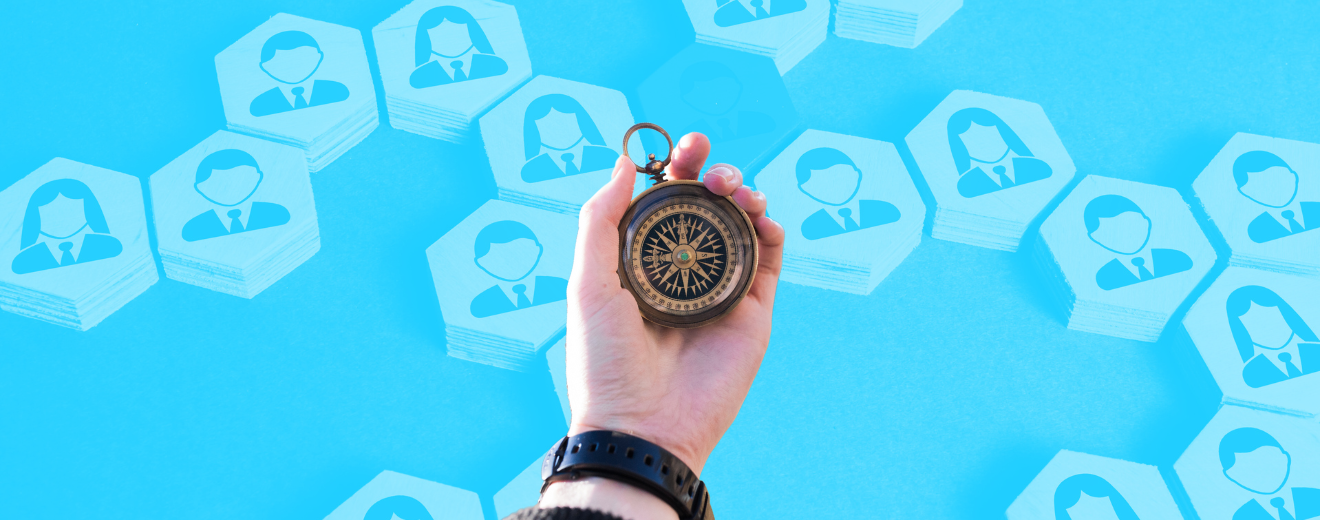- Speed up product development
- Make people work in (cross-functional) teams
- Want to launch more innovative (digital) products
- Get more productivity out of their people
- Find out what all this agile fuzz is all about
I’ve learned over the years that most agile transformations either start ‘top-down’. This is mostly because a big consultancy (usually McKinsey) convinced the BOD about the agile organisation (I love McKinsey). Sometimes it starts bottom-up (because some IT guys found this to be a better way to develop great digital products).
The below image shows the 3 stages I see for an agile transformation (and I see them as recurring, iterating, and continuous improvement).
Start Agile
What is start agile? What are the topics that start agile talks about? Here is the focus of start agile:
- Structure: usually tribes and squads or scrum teams
- Process: almost always scrum or elements of scrum
- People: training people in a scrum or agile fundamentals
- Leadership: make leaders aware of what’s happening
- Tools: Jira, Trello, and some other tools for visualisation
Once the basics are in place, some people conclude that they created an agile organisation. Transformation ‘done’.
My view here is:
- Transformation is never done; it’s not a project, it’s a never-ending cycle of ‘getting better at what we do and how we do things’
- The focus after the basics has to be on Agile habits
- To get a large organisation agile, we need to get the agile building blocks right
Read More: Agile Retrospectives, an Effective Tool for Continuous Improvement
Agile Organisation
The building blocks of an Agile organisation are well defined by McKinsey. Below image shows the organisation level practices:
These are all very important aspects of the organisation that we need to get right. In most transformations, we develop a roadmap that runs for several years. We tackle the building blocks one by one and keep iterating and improving.
Many of the above building blocks are ‘hard’; they are about structure, systems, and tools. What’s an equally important and often overlooked part is: how do we change people’s behaviors? How do we teach people to become more entrepreneurial, to innovate, and to ‘keep learning’?
Read More: Agile Maturity Assessment Tool, Know your Maturity Level
Agile Habit
If we want to change the way a large group of people thinks and go about work, we need to change their habits. This is not about a one-off training program. It’s not about hiring an agile coach per se. It’s about an institutionalised way of encouraging people to change their ‘ways’.
One of the themes in agility is ‘self-organisation’. This sounds exciting to most people. But the question we all have is ‘how do we stimulate self-organisation?’ What is expected of us? How do we self-organise? The answer to these questions is: to define, encourage and measure agile habits.
As I organise a series of podcasts, articles, and eventually a book about the agile habit, I have listed out the ones I see. As a reader, maybe you recognise different or additional behaviors I have missed out on. In the spirit of co-creation, it would be great to receive your thoughts in the comments to this article. If you want to do an interview in a podcast or share your ideas otherwise, please comment or reach out to me.
Email us at anis.shakirah@ekipa.co to get a copy of the Start Agile eBook!

.png)





